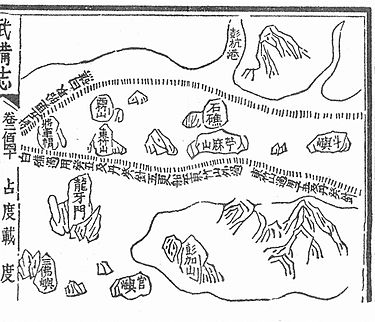Pahang

Pahang (Malay pronunciation: [paˈhaŋ]; Jawi: ڤهڠ), officially Pahang Darul Makmur with the Arabic honorific Darul Makmur (Jawi: دار المعمور, “The Abode of Tranquility”) is a sultanate and a federal state of Malaysia. It is the third largest Malaysian state by area and ninth largest by population.[2] The state occupies the basin of the Pahang River, and a stretch of the east coast as far south as Endau. Geographically located in the East Coast region of the Peninsular Malaysia, the state shares borders with the Malaysian states of Kelantan and Terengganu to the north, Perak, Selangor and Negeri Sembilan to the west, Johor to the south, while South China Sea is to the east. The Titiwangsa mountain range that forms a natural divider between the Peninsula’s east and west coasts is spread along the north and south of the state, peaking at Mount Tahan, which is 2,187m high. Although two thirds of the state is covered by dense rain forest, its central plains are intersected by numerous rivers, and along the coast there is a 32-kilometre wide expanse of alluvial soil that includes the deltas and estuarine plains of the Kuantan, Pahang, Rompin, Endau, and Mersing rivers.[6]
The state is divided into 11 administrative divisions called daerah (districts) – Pekan, Rompin, Maran, Temerloh, Jerantut, Bentong, Raub, Lipis, Cameron Highlands and Bera. The largest district is Jerantut, which is the main gateway to the Taman Negara national park. Pahang’s capital and largest city, Kuantan, is the eighth largest urban agglomerations by population in Malaysia. The royal capital and the official seat of the Sultan of Pahang is located at Pekan. Pekan was also the old state capital which its name translates literally into ‘the town’, it was known historically as ‘Inderapura’.[7] Other major towns include Temerloh, Bentong and its hills resorts of Genting Highlands and Bukit Tinggi. The head of state is the Sultan of Pahang, while the head of government is the Menteri Besar. The government system is closely modeled on the Westminster parliamentary system. The state religion of Pahang is Islam, but grants freedom to manifest other religions in its territory. Pahang is categorised as medium ethnically diverse state with 0.36 of ethnic diversity index in 2010. It is ranked 5th least diverse among Malaysian states and territories, after Terengganu, Kelantan, Melaka and Perlis.[8]
Archaeological evidences revealed the existence of human habitation in the area that is today Pahang from as early as the paleolithic age. The early settlements gradually developed into an ancient maritime trading state by the 3rd century.[9] In the 5th century, the Old Pahang sent envoys to the Liu Song court. During the time of Langkasuka, Srivijaya and Ligor, Pahang was one of the outlying dependencies. In the 15th century, the Pahang Sultanate became an autonomous kingdom within the Melaka Sultanate. Pahang entered into a dynastic union with Johor Empire in the early 17th century and later emerged as an autonomous kingdom in the late 18th century. Following the bloody Pahang Civil War that was concluded in 1863, the state under Tun Ahmad of the Bendahara dynasty, was eventually restored as a Sultanate in 1881. In 1895, Pahang became a British protectorate along with the states of Perak, Selangor and Negeri Sembilan. During the World War II, Pahang and other states of Malaya were occupied by the Empire of Japan from 1941 to 1945. After the war, Pahang became part of the temporary Malayan Union before being absorbed into the Federation of Malayas and gained full independence through the federation. On 16 September 1963, the federation was enlarged with the inclusion of new states of North Borneo, Sarawak and Singapore (expelled in 1965). The federation was opposed by neighbouring Indonesia, which led to the Indonesia–Malaysia confrontation over three years along with the continuous war against local Communist insurgents.
Modern Pahang is an economically important state with main activities in services, manufacturing and agricultural sectors. As part of ECER, it is a key region for the manufacturing sector, with the local logistics support network serving as a hub for the entire east coast region of Peninsular Malaysia.[10] Over the years, the state has attracted much investment, both local and foreign, in the mineral sector. Important mineral exports include iron ore, gold, tin and bauxite. Malaysia’s substantial oil and natural gas fields lie offshore in the South China Sea. At one time, timber resources also brought much wealth to the state. Large-scale development projects have resulted in the clearing of hundreds of square miles of land for oil palm and rubber plantations and the resettling of several hundred thousand people in new villages under the federal agencies and institutions like FELDA, FELCRA and RISDA.
